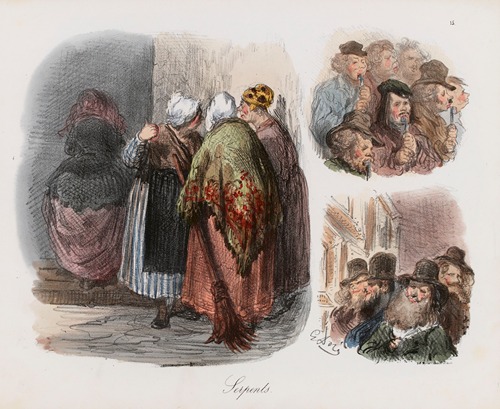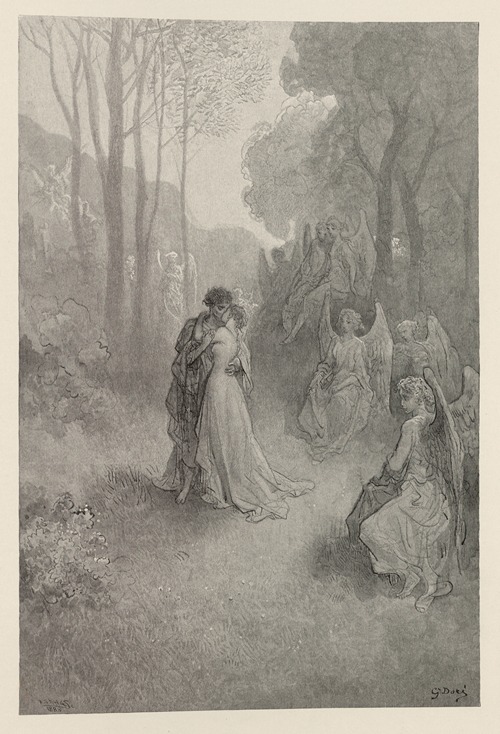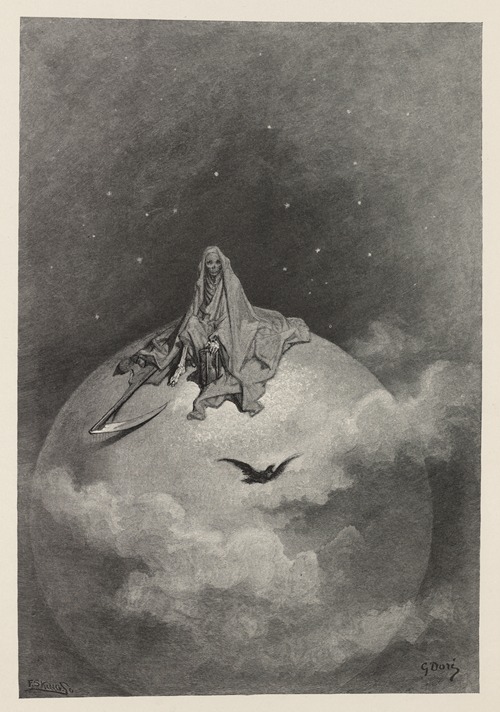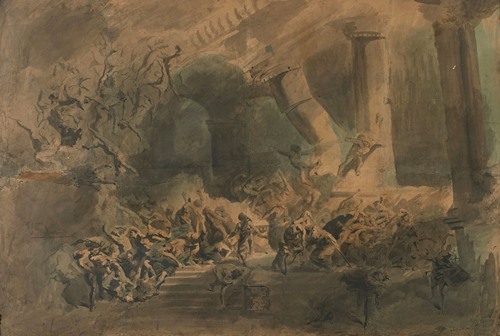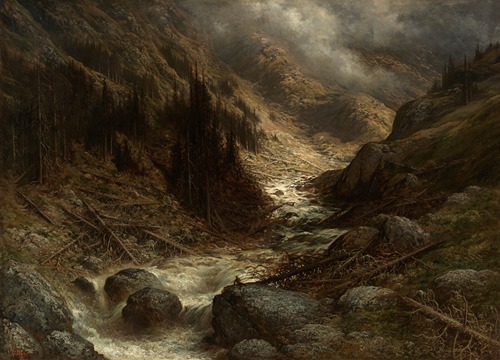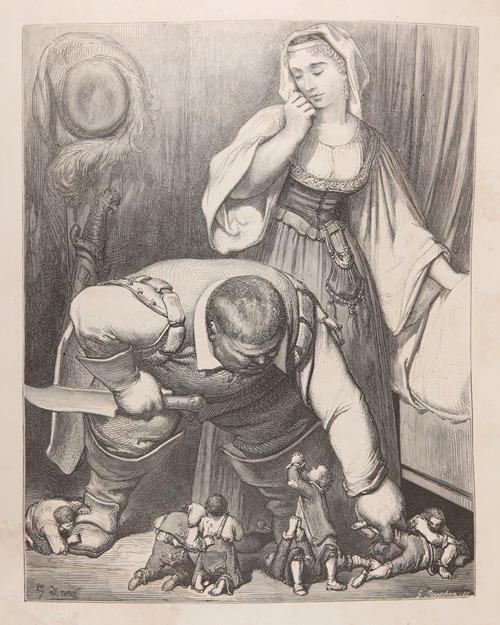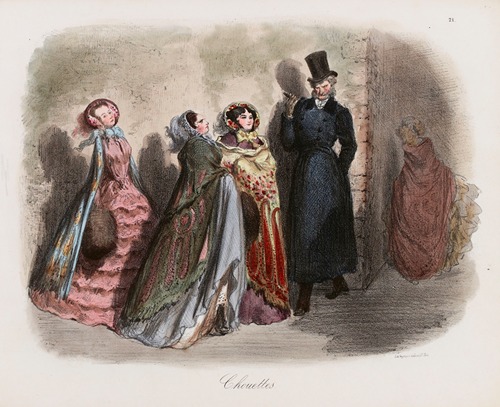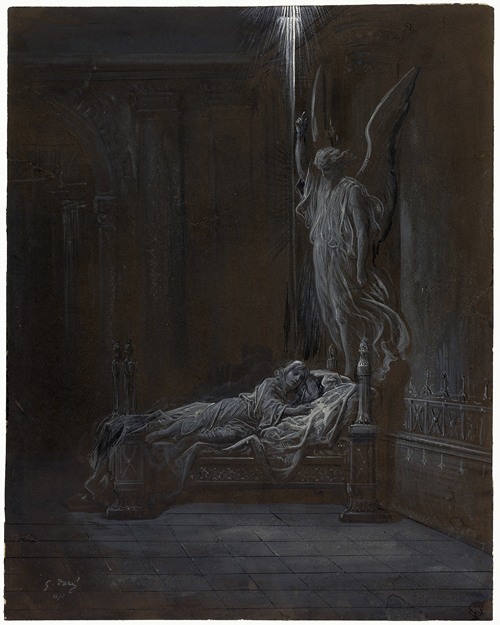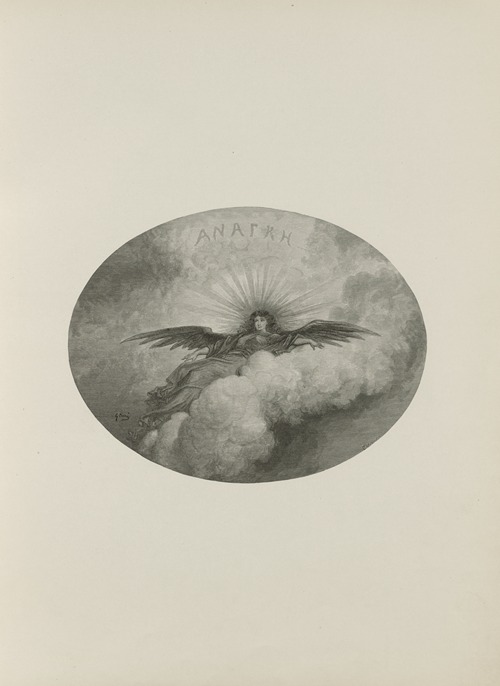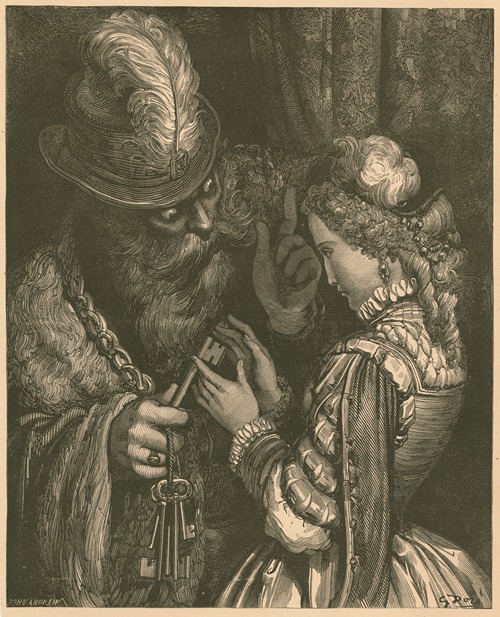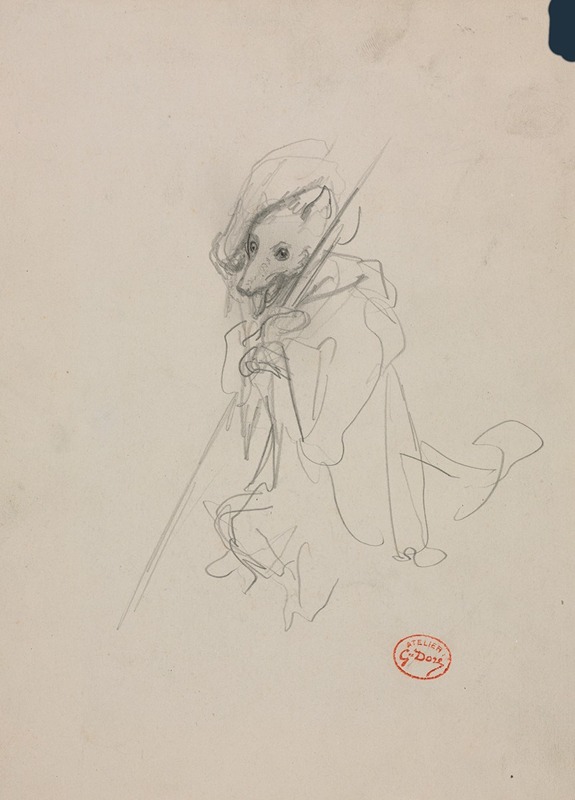

Paul Gustave Dore Louis Christophe Was a French artist, printmaker , illustrator , comics artist , caricaturist , and sculptor Who worked primarily with wood-engraving .
Doré was born in Strasbourg on 6 January 1832. By age 5 he was a prodigy artist, creating drawings that were mature beyond his years. Seven years later, he began carving in stone. At the age of 15, Doré began his career working as a caricaturist for the French paper Le journal pour rire . Wood-engraving was his primary method at this time. In the late 1840s and early 1850s, he made several text comics , like Les Travaux d'Hercule (1847), Trois artistes misunderstood et malcontents (1851), Les Dés-agrments d'un voyage d'aménément (1851) and L ' History of Holy Russia(1854). Doré subsequently went on to win commissions to depict scenes from books by Cervantes , Rabelais , Balzac , Milton , and Dante . He also illustrated "Gargantua et Pantagruel" in 1854.
In 1853 Doré was asked to illustrate the works of Lord Byron . This commission was followed by additional work for British publishers, including a new illustrated Bible . In 1856 he produced 12 folio-size illustrations of The Legend of The Wandering Jew , which propagated longstanding antisemitic views of the time, for a short poem which Pierre-Jean de Béranger had derived from a novel of Eugène Sue of 1845.
In the 1860s he illustrated a French edition of Cervantes 's Don Quixote , and his depictions of the knight and his squire, Sancho Panza , have become so famous that they have influenced subsequent readers, artists, and stage and film directors' ideas of the physical "look" of the two characters. Doré also illustrated an oversized edition of Edgar Allan Poe 's " The Raven ", an endeavor that earned him 30,000 francs from publisher Harper & Brothers in 1883.
Doré's later work included illustrations for new editions of Coleridge 's Rime of the Ancient Mariner , Milton ' s Paradise Lost , Tennyson 's Idylls of the King , The Works of Thomas Hood , and The Divine Comedy . Doré's work also appeared in the weekly newspaper The Illustrated London News .
Doré never married and, following the death of his father in 1849, he continued to live with his mother , illustrating books until his death in Paris following a short illness. The city's Père Lachaise Cemetery contains his grave. At the time of his death in 1883, he was working on illustrations for an edition of Shakespeare's plays . The government of France made him a Chevalier de la Légion d'honneur in 1861.

